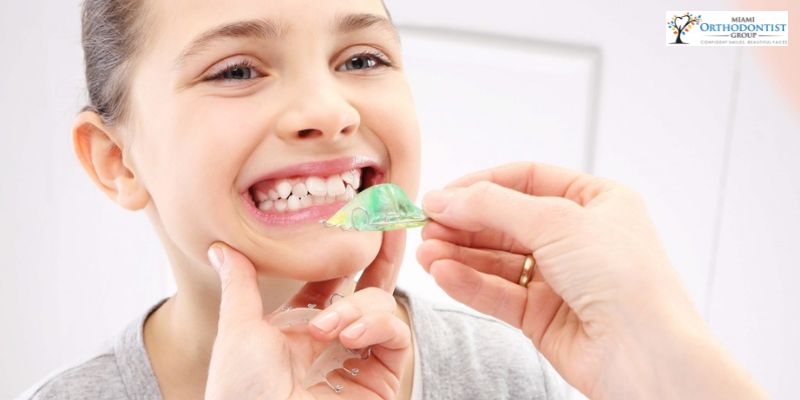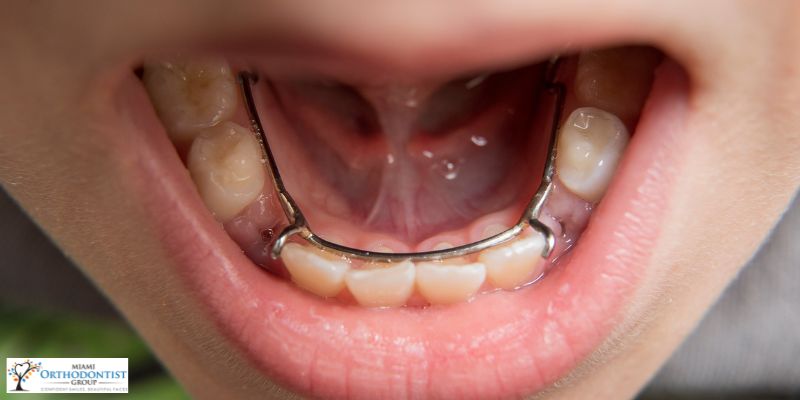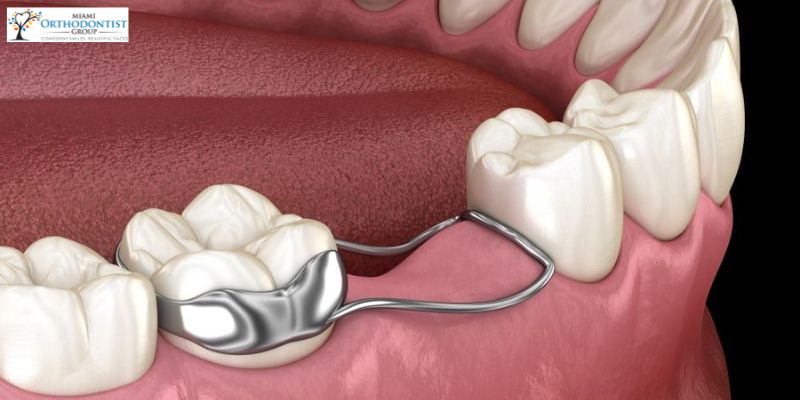Space Maintainers are crucial for oral health. They are objects placed in the mouth to maintain and preserve space between teeth. Space Maintainers are necessary when there is a loss in premature molars because of disease or trauma.
The role of a space maintainer is to allow the teeth to grow in the right place and align appropriately with another permanent tooth. When babies lose their teeth early, they usually have no guidance. The eruption process is natural and requires a guide to align nearby straight teeth.
Failure to aid its eruption will lead to a bad tooth position, and in most cases, it will grow in the wrong place in the gum. When there’s space between the teeth, other teeth can move to the open space, preventing permanent teeth eruption or proper alignment.
Space Maintainers must be used correctly; proper usage prevents the teeth from moving and causes loss of space for teeth.
Inclusively the permanent adult teeth like bicuspids and canines. Moreso, if the teeth are not firm, it begins to drift forward into another space, thereby causing a blockage and stopping the bicuspid teeth from erupting.
The process is vice versa; if not firm, the early bicuspid can also move inward and prevent the canines from erupting in the correct position and firmly.
Different types of space Maintainers can be used to preserve an individual’s oral health. Some of these Maintainers are long term while some are short-term usage.
In society, most deciduous teeth are ignored because of their temporal or short-term existence. Nevertheless, they are also important because they aid the growth and eruption of permanent teeth.
Some leading causes of teeth falling out and causing space in between are prolonged feeding with the bottle for babies. Also, the removal of grossly decayed primary teeth.
The types of space Maintainers depend mainly on the cause and extent of space in the teeth. The two types of space Maintainers are Removable and Fixed space Maintainers.
Your dentist will check and prescribe suitable space Maintainers when and if necessary.
Below are some of the role of space Maintainers in oral health:
Role of Space Maintainers in Oral Health
A Space Maintainer Helps to Shape the Teeth
The role of a space maintainer cannot be limited; it aids in aligning the erupting teeth. The space maintainer maintains the teeth’ arch length, width, and circumference.
It keeps it in regular shape, preventing unaligned and irregular growth and physique.
Often it is used in the mandibular and maxillary arch to aid the arch length after tooth removal. This is also to prevent future orthodontic treatments and complications.
A Space Maintainer Helps to Avoid Supra Eruption of the Opposing Tooth
Without a space maintainer, it is likely for a tooth to grow out of place in any available space. This can be prevented by the presence of a space maintainer, which protects the space created by the lost tooth until there’s an eruption.
When there’s a space loss, malocclusion and overcrowding can happen. In cases like the maxillary arch, a different method can be used in molar distalization.
Regaining space in the upper arch can be more challenging than in the lower arch; in such situations, the lip bumper can be used to avoid overcrowding and maintain space.
Improvement of Speech Abilities

If a child loses the anterior teeth, speech production may be affected. The formation and production of sounds will be unnatural.
The space Maintainers aid in improving speech while beautifying the treatment process done by losing a tooth.
How and When to Wear a Space Maintainer

The best time to wear a space maintainer is when it is required. Most times, it is after a tooth loss or extraction.
Your orthodontic specialist will advise you when a space maintainer is needed. Ideally, it should be fixed as soon as possible to avoid complications.
How a space maintainer is worn depends on the type of space maintainer and its function.
Usually, patience is required before the child gets used to wearing a removable space maintainer. Since it is a foreign orthodontic appliance introduced to the child’s mouth, the guardian should exercise patience until the child gets comfortable wearing and using the teeth aligner.
Notably, the child should be encouraged to practice proper oral hygiene. Regular brushing, cleaning, and flossing should be practiced to prevent future infections or damage to the space maintainer.
When it is a fixed space maintainer, the user should avoid certain foods that can stick to the teeth and in between the space Maintainers.
Furthermore, it is advisable not to stick fingers in between or tug the appliance using your teeth or tongue as this may cause the appliance to weaken and lose.
Continuous monitoring of the appliance is required, and do not hesitate to let your dentist know if there is any change or loosening.
If a space maintainer is not used correctly and there is a loss of teeth, the child will likely experience a drifting of teeth and a midline shifting of teeth. Sometimes they experience tipping in the tooth.
The crowding and alterations of arch-length teeth can reduce a child’s self-esteem and disrupt the child’s emotional and physical health.
Moreso, failure to use a space maintainer will lead to orthodontic processes, which can be stressful and painful, like teeth extraction, and it can also lead to future complications.
Conclusion
The loss of teeth almost cannot be avoided. It is the responsibility of guardians and parents to prevent future complications and misalignment of teeth, which can disrupt a child’s emotional and physical well-being.
Regularly visiting an orthodontic specialist and maintaining oral hygiene are very important. Taking care of a child’s oral health is as important as caring for the child’s general health.


